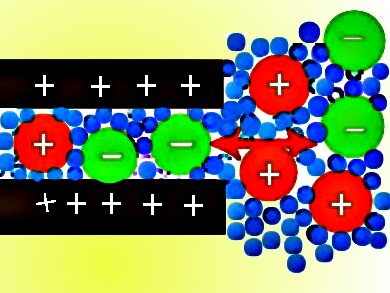Hao Wang and colleagues at the University of Cambridge, UK, have developed in situ NMR methodologies to study changes at the electrode-electrolyte interface in supercapacitors as they charge and discharge. They use a YP50F-NEt4BF4/dACN supercapacitor system in which changes in 19F NMR spectra correspond to changes in the population of adsorbed BF4– species.
The NMR experiments reveal two different charge storage regimes. At low cell voltages (< 0.75 V) charging is achieved through short-scale rearrangements and ejection of co-ions from carbon electrode micropores. At high cell voltages (> 0.75 V) counterion adsorption in the positive electrode is also important.
Simultaneous cyclic voltammetry indicates that changes in the resonance frequency of adsorbed species during charging arise because of changes in the electronic structure of the charge-storing carbon.
- In Situ NMR Spectroscopy of Supercapacitors: Insight into the Charge Storage Mechanism,
Hao Wang, Alexander C. Forse, John M. Griffin, Nicole M. Trease, Lorie Trognko, Pierre-Louis Taberna, Patrice Simon, Clare P. Grey,
J. Am. Chem. Soc. 2013.
DOI: 10.1021/ja410287s


